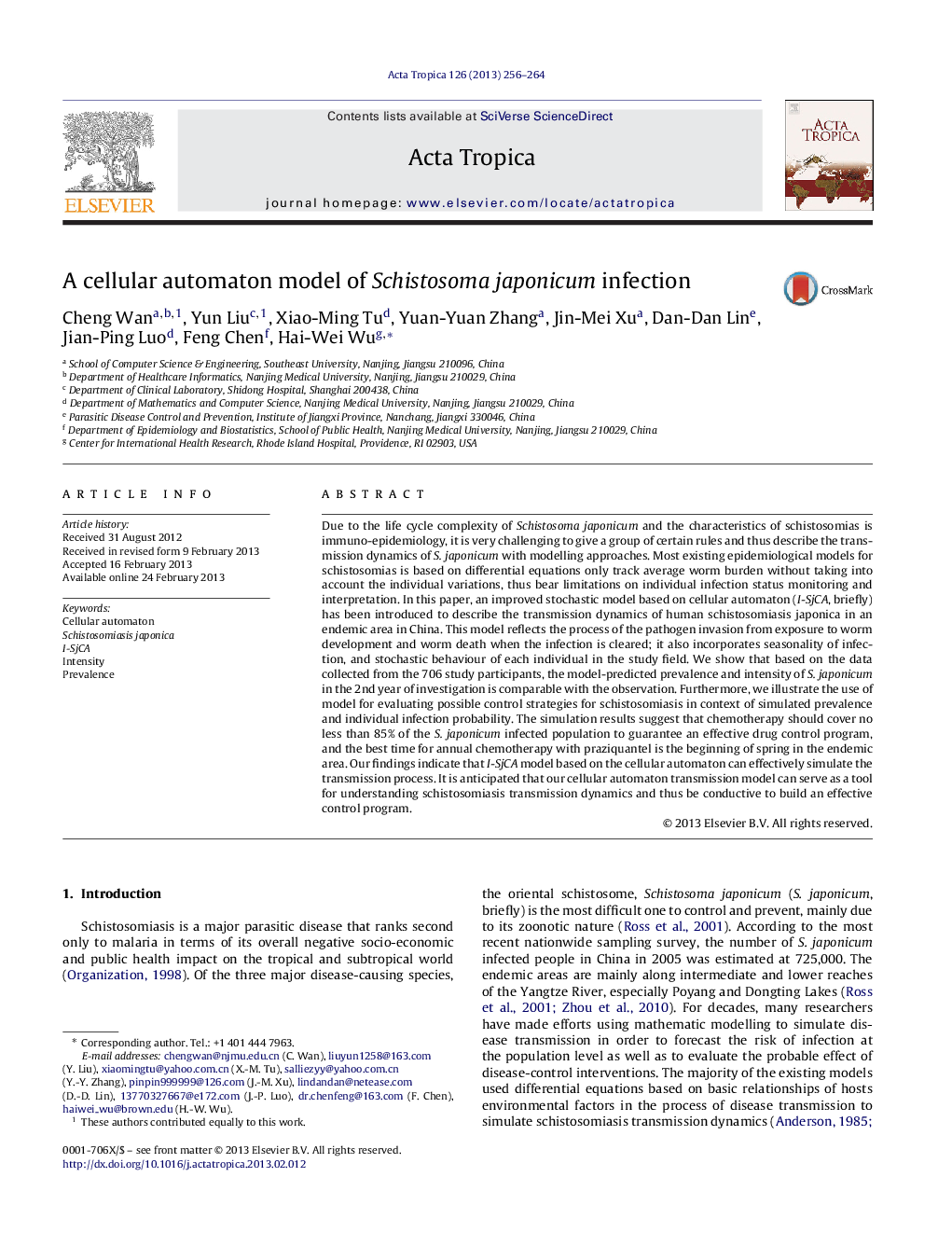| Article ID | Journal | Published Year | Pages | File Type |
|---|---|---|---|---|
| 3393851 | Acta Tropica | 2013 | 9 Pages |
Due to the life cycle complexity of Schistosoma japonicum and the characteristics of schistosomias is immuno-epidemiology, it is very challenging to give a group of certain rules and thus describe the transmission dynamics of S. japonicum with modelling approaches. Most existing epidemiological models for schistosomias is based on differential equations only track average worm burden without taking into account the individual variations, thus bear limitations on individual infection status monitoring and interpretation. In this paper, an improved stochastic model based on cellular automaton (I-SjCA, briefly) has been introduced to describe the transmission dynamics of human schistosomiasis japonica in an endemic area in China. This model reflects the process of the pathogen invasion from exposure to worm development and worm death when the infection is cleared; it also incorporates seasonality of infection, and stochastic behaviour of each individual in the study field. We show that based on the data collected from the 706 study participants, the model-predicted prevalence and intensity of S. japonicum in the 2nd year of investigation is comparable with the observation. Furthermore, we illustrate the use of model for evaluating possible control strategies for schistosomiasis in context of simulated prevalence and individual infection probability. The simulation results suggest that chemotherapy should cover no less than 85% of the S. japonicum infected population to guarantee an effective drug control program, and the best time for annual chemotherapy with praziquantel is the beginning of spring in the endemic area. Our findings indicate that I-SjCA model based on the cellular automaton can effectively simulate the transmission process. It is anticipated that our cellular automaton transmission model can serve as a tool for understanding schistosomiasis transmission dynamics and thus be conductive to build an effective control program.
Graphical abstract. We developed a new cellular automata model of Schistosoma japonicum infection to reflect the population and individual worm-burden fluctuation and thus to provide recommendations for control strategies.Figure optionsDownload full-size imageDownload as PowerPoint slideHighlights► SjCA is a novel Schistosoma japonicum transmission model using cellular automaton. ► SjCA model predicts not only prevalence but also individual infection status. ► SjCA evaluates impact of chemotherapy coverage and schedule for control programs.
